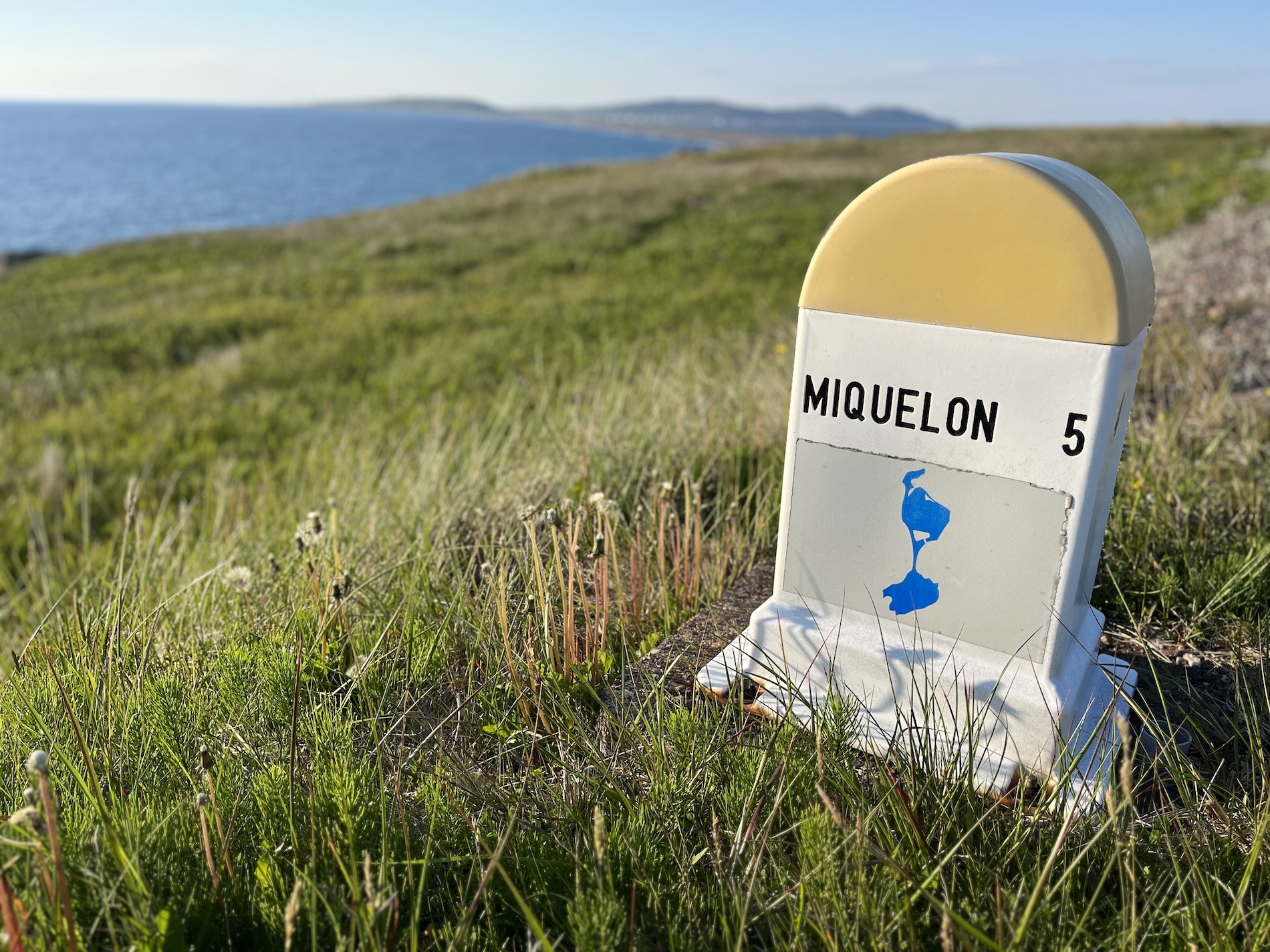
Exploring French Identity in Canada and the Basque Country
During the summer of 2024, I had the privilege of exploring the rich diversity of languages and dialects in the transatlantic French and Francophone world through the Newman Exploration Travel Fund (NEXT) award. Throughout this extensive trip across North America and Europe, I visited Montreal in Quebec, Canada; St. Pierre et Miquelon, a French island off the coast of Canada; and Basque Country, an Euskara-speaking region in France and Spain, to explore the global boundaries of French identity. My exploration focused on two perspectives: minority French speakers in predominantly non-French regions and minority non-French speakers within primarily French-speaking areas. Through conversations with strangers, historians, tour guides, and fellow solo travelers, I experienced the vast linguistic diversity of the French transatlantic world. Most interestingly, I was struck by the historical connections and underpinnings that wove my three journeys into one: stories of migration, war, maritime travel, trade, and ancestral ties to land and language that extend far beyond the confines of metropolitan French identity.
Montreal
My journey began in Quebec, Canada, the heart of the Francophone world in the Americas since the early 17th century. Upon my arrival, I was struck by how prominently and widely French was spoken—hearing airplane announcements and reading bus signs in French—just two hours away from my home state of New York. Quebec, with its capital city of Montreal, represents a success story in maintaining the French language rooted in its Acadian heritage since the English-speaking British crown took control in 1763. While exploring the streets of Montreal, I learned the most from my interactions and conversations—both in French
and in English.
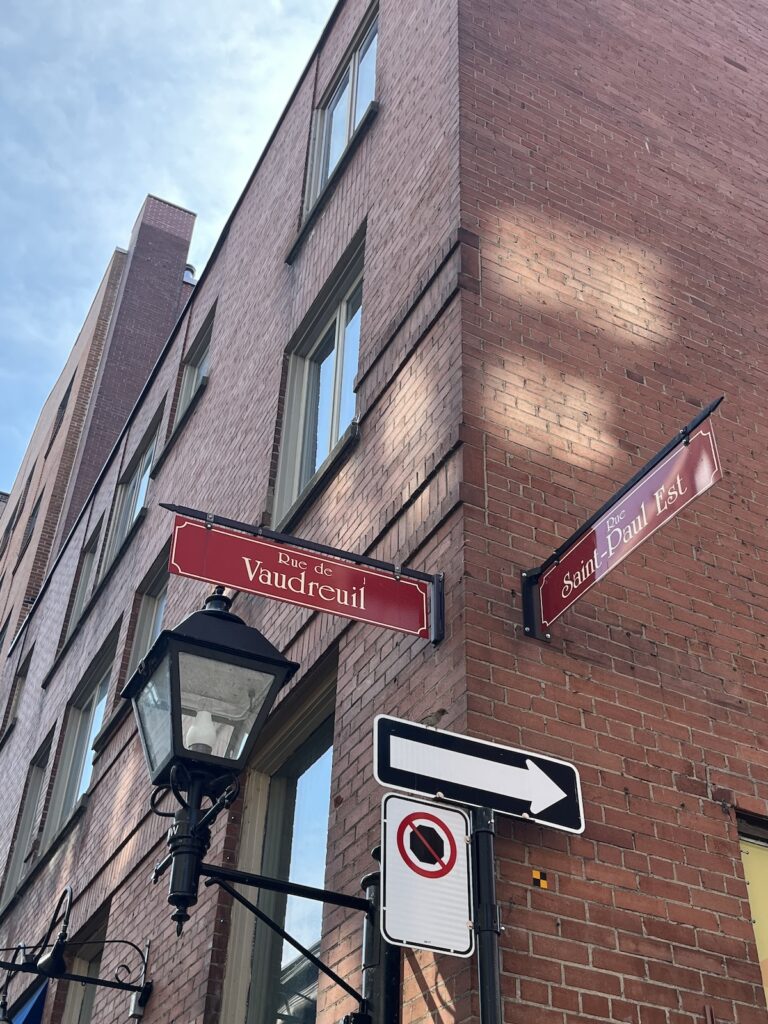

I was particularly struck by the ease with which people transitioned from one language to another. Rather than being a Francophone community in an English-speaking world, Quebec emerged as a truly bilingual community of speakers. Soon, I discovered a strong sense of pride associated with speaking French rather than English. Most people, whether ordering a coffee or stepping onto a bus, would address me in French to “test” whether I was a tourist or a Québécois. I deduced that this pride in upholding the French language is tied to the historical necessity of preserving it under English-speaking British and Canadian rule. Even after the creation of the Canadian Confederation in 1867, the need to uphold French persisted due to waves of English-speaking immigration. More recently, in response to the gradual decline of the French language, the Quebec government passed the Charter of the French Language in 1977, mandating the use of French in government, education, business—and even street signs. In Quebec, I noticed that stop signs say “Arrêt” instead of “Stop,” which is the standard in most places, particularly in North America and Europe. This choice reflects a commitment to the French language that extends even beyond that of France itself.
By the end of my stay in Montreal, I realized that the accent variation between my Parisian French and Québécois had increasingly exhausted me beyond my expectations. For example, I spoke to an older woman for about twenty minutes while waiting for a bus, and she was delighted to hear about my solo travels. Unbeknownst to her, I awkwardly struggled to understand her due to our accent differences. Finally, when the bus arrived, I asked the driver for instructions and directions. Unable to understand his accent, I found myself on the wrong bus. When I later recounted these experiences to the Québécois woman sitting next to me on the plane to St. Pierre et Miquelon (who thankfully I could understand better), I exclaimed to her, “J’étais vraiment choquée!” (I was really shocked). As if to prove my point, she laughed and informed me that in Québécois, “choquer” does not mean surprised, but angry. Yet again, I had affronted another linguistic difference that made me appreciate how accent and meaning vary across the same language, while also feeling relief to land back in the familiarity of more metropolitan French in St. Pierre et Miquelon.
St. Pierre-et-Miquelon
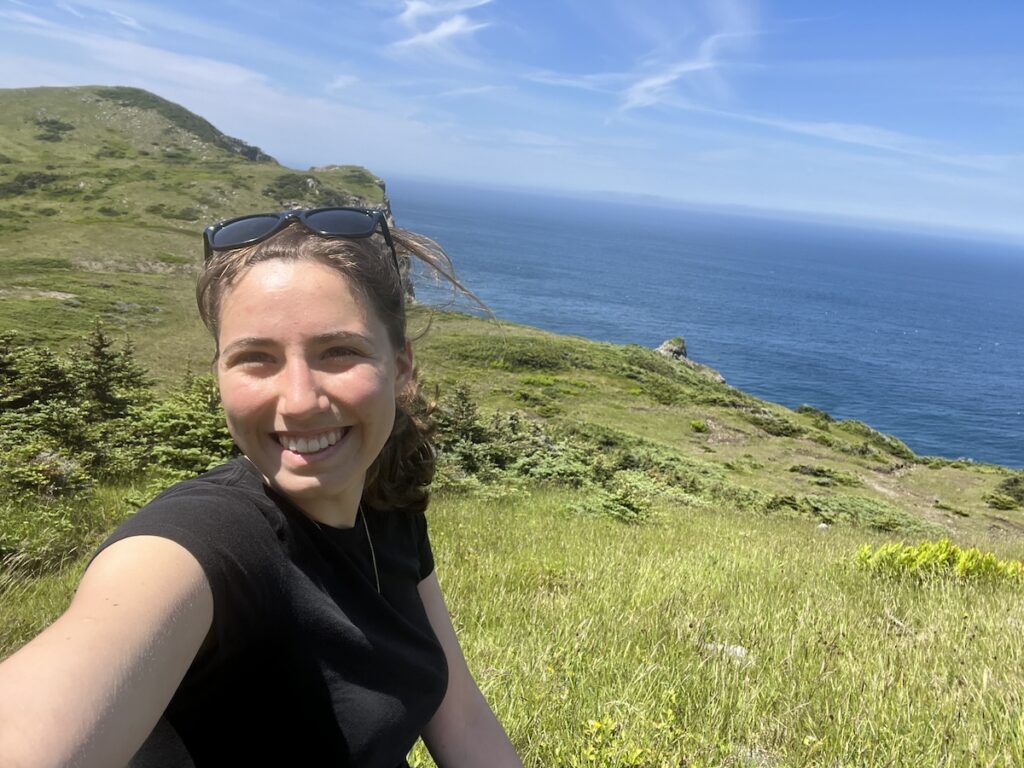
From Montreal, I took a small propeller plane to the only formal remnants of the French colonies in North America: the remote archipelago of St. Pierre et Miquelon, a cluster of islands off the coast of Newfoundland. Due to its history of immigration and isolation, St. Pierre et Miquelon has been the subject of academic study by ethnolinguists and historians such as Patrice Brasseur and Carmen Roy. They argue that while the six thousand inhabitants of St. Pierre et Miquelon take pride in speaking ‘Metropolitan French’ in contrast to their closest Francophone communities in Quebec, their linguistic chauvinism overlooks the long history of Basque and Norman influence on the language. While I could certainly hear a strong Northern French accent in Miquelonais speech, I found it much more difficult to translate between cultures than between accents.
Upon arriving, I took some time to adjust to the culture shock of the laid-back inhabitants: no bike locks needed, no shops open during lunch hours or on weekends, and no large supermarkets. In fact, when I first landed in St. Pierre, I realized I had no taxi or cellular service to get to my lodging. As I began to drag my suitcase from the airport to my apartment, Eva, a girl my age with a strong Northern accent who was picking up her boyfriend from the airport, offered me a ride. She gave me a tour of the island, sharing stories about her studies in France and her desire to move away, yet how her attachment to the islands was too strong. On the way back, she paused in front of every house to tell me who lived there—everyone seemed to know each other well and had developed a strong bond with the place. I learned from Eva that the uniqueness of St. Pierre et Miquelon lay in the close-knit community the archipelago represented—the people and the places deeply connected to one another.
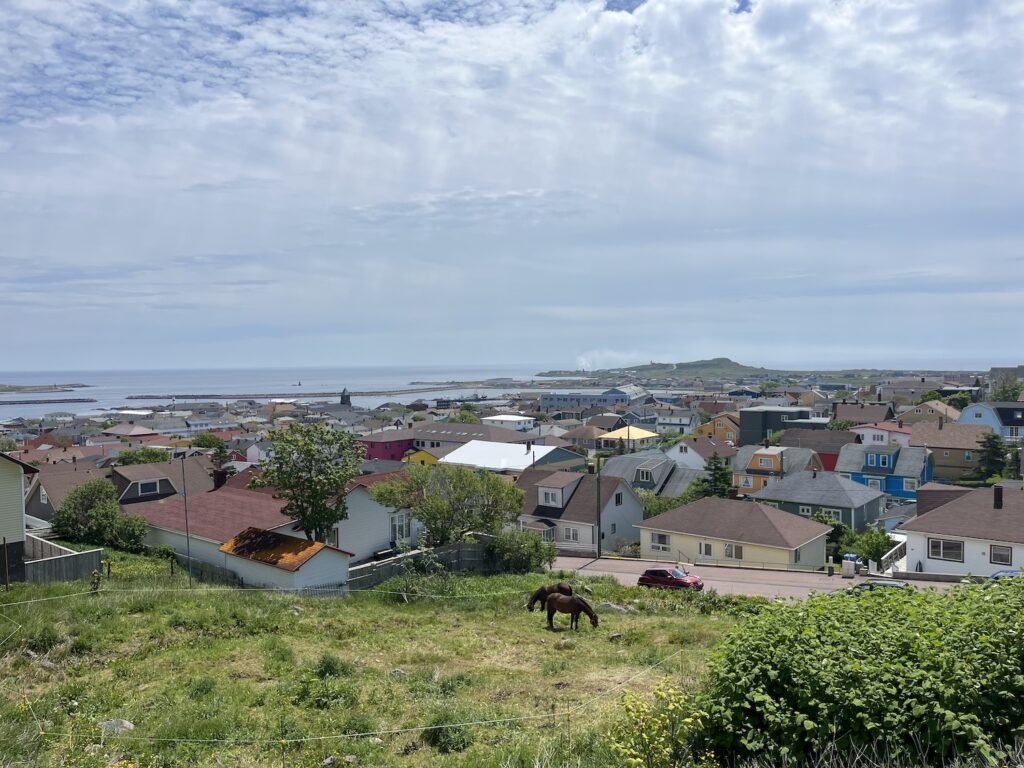
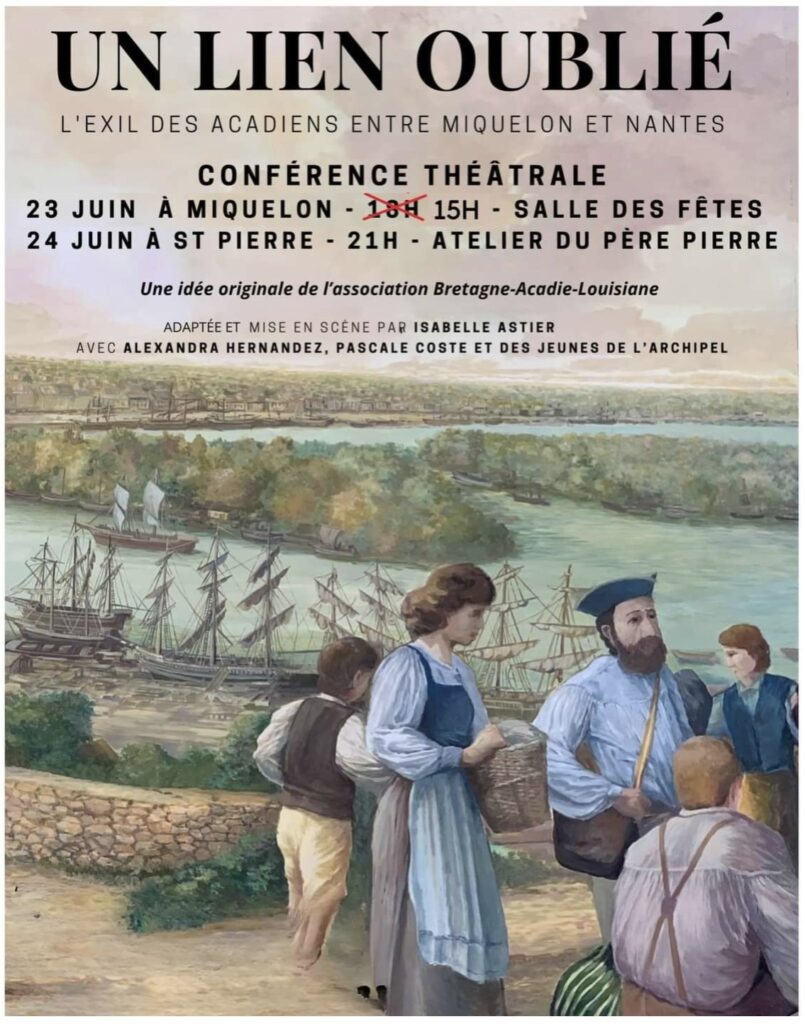
The importance of people and place to the St. Pierre-et-Miquelonnais became clear to me when I attended a theatrical conference titled “Un Lien Oublié: l’Exil des Acadiens entre Miquelon et Nantes.” This play was held by master’s students from the University of Nantes who had studied the connections and migrations of French settlers in North America, known as the Acadians, from Nantes, France, to St. Pierre et Miquelon. Their retelling of the Acadian people’s history in Canada and St. Pierre et Miquelon used theatre, song, and storytelling to chronicle the tales of the first sailors and whalers who ventured into the austere and dangerous lands and oceans surrounding St. Pierre et Miquelon, the tensions between the English and the French vying for these territories, the ongoing displacement and movement of refugees from Nantes to Canada and the islands, the suppression of the French language by the English, and the celebratory victory of the French and St. Pierre-et-Miquelonnais over the British in 1816. The frequent references to St. Pierre et Miquelon as the “promised land” where the Acadians could speak their French language despite British oppression highlighted the deep attachment the St. Pierre-et-Miquelonnais have to their people, land, and language, while also illuminating the lasting influence of these historical narratives today.
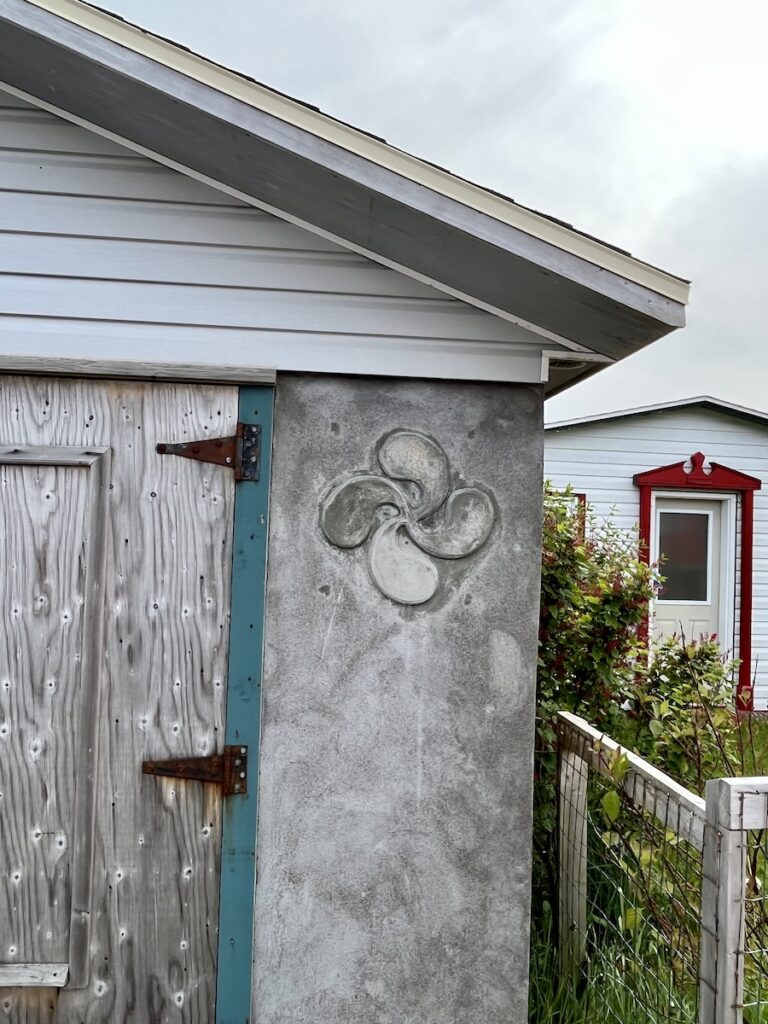
As I wandered the streets of St. Pierre, I could sense a living pride in the ancestral roots of the community. A significant group of immigrants to St. Pierre et Miquelon were Basque whalers, and as I explored the few stores and cafés on the island, Basque immigrant pride was palpable. Everywhere I walked, I spotted Basque flags, Basque names for the local bistros and cafés (like “chez Txetxo”), Basque bumper stickers, posters, and advertisements for their annual Basque dance parade. Together, from the Acadians to the Basques, all those who arrived from different places for various reasons across the Atlantic Ocean contributed to a strong sense of community and pride that now defines the St. Pierre-et-Miquelonnais.
Most of the time, on these sparsely populated and remote islands surrounded by the Atlantic Ocean, I explored the natural beauty of the archipelago: I hiked to the lighthouse at “Cap aux Basques”; I watched thousands of Leach’s petrel birds fly to their protected home on Grand Colombier; I observed the faint coastline of Newfoundland on my three-person ferry ride to the islands of Miquelon-Langlade; I biked nearly 50 km on the only road through the islands across the narrow isthmus connecting them, with only a handful of cars driving by; I collected purple rocks on the beach of Mirande; I sometimes fought to keep myself standing against the strong winds, watching the late sunsets. Throughout these experiences, and though I carried Eva’s advice about the sudden storms and dense fog along the coastline while traveling alone, I could not deny an underlying fear within me. Never before had I encountered the possibility of dangers and fears that were entirely natural and not man-made; fears that were but a fraction of what the Basque whalers, Acadian immigrants, and their families who first moved to St. Pierre et Miquelon must have felt like the driver who passed me during my bike ride and offered to take my backpack to my overnight destination, or the young boy who biked alongside me to the beach and shared his excitement for summer vacation to begin. From St. Pierre et Miquelon, it seemed clear to me that the next part of my journey would include a trip to the Basque Country to understand the ties between the movements of people and language that had occurred so long ago.
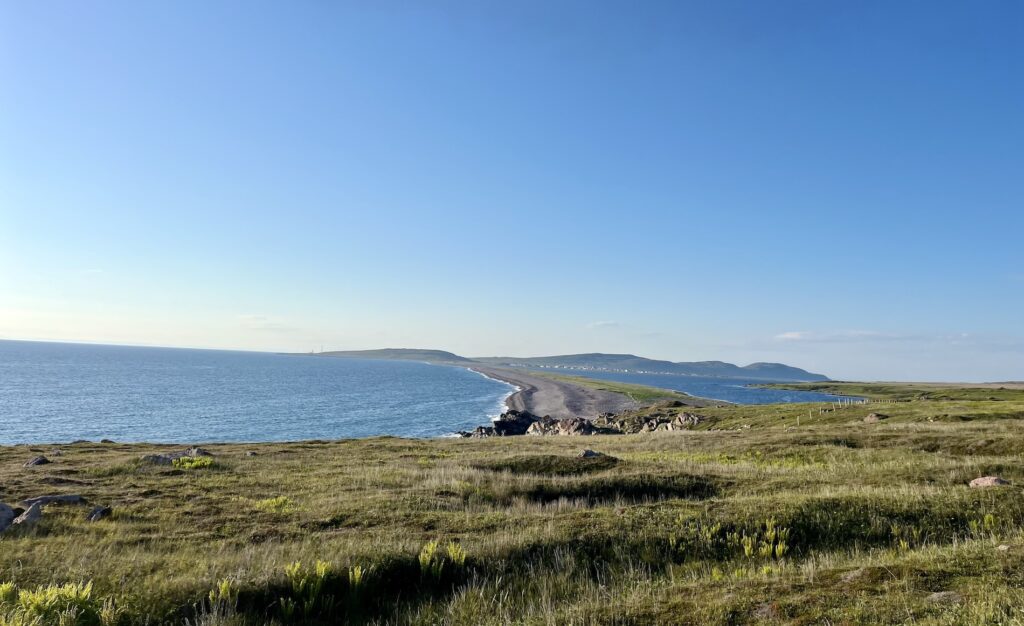
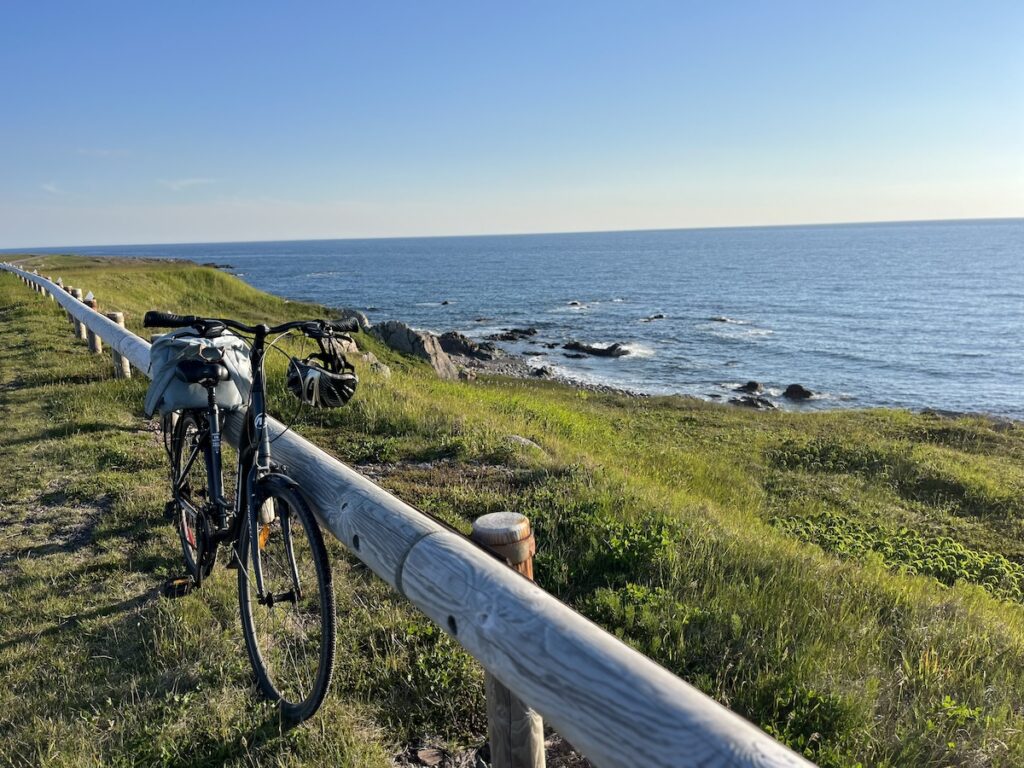
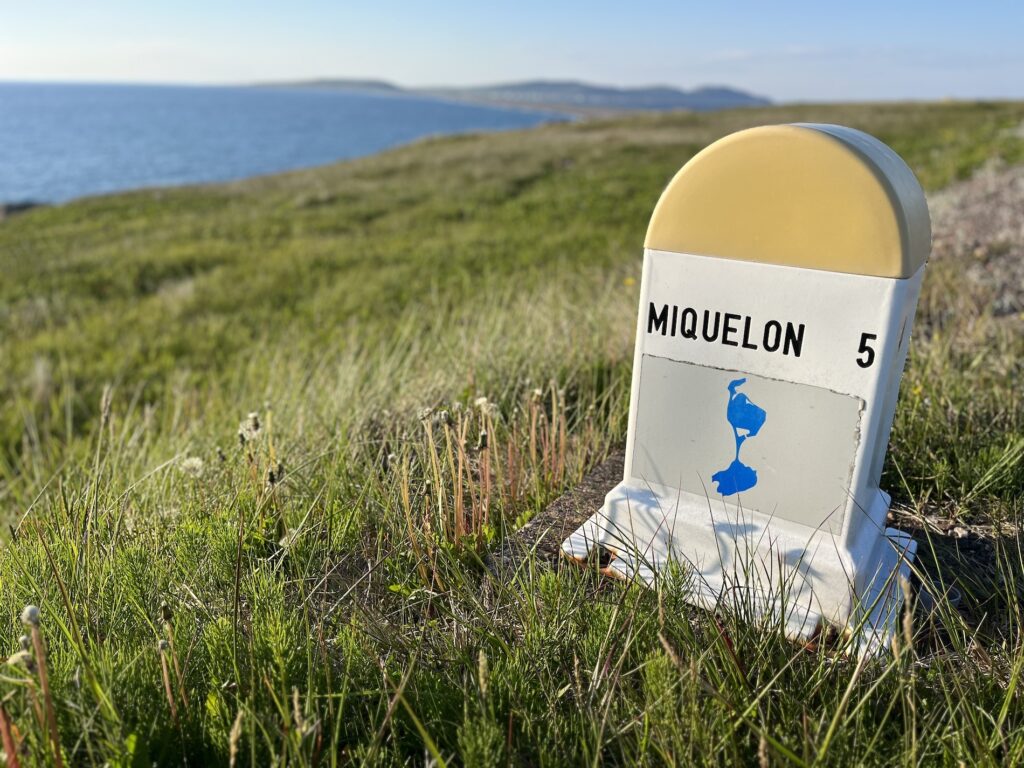
Basque Country
On the last leg of my journey, my trip through the Basque Country allowed me to realize how deeply language is tied to politics as a form of control and power. The Basque region straddles the border of Spain and France, and while I had originally planned to confine my exploration to the French and Francophone world, traveling to the Spanish Basque Country provided an important comparative perspective on Basque identity across different governmental systems. In both the Spanish and French regions, the Basques have been striving for political autonomy and the unification of all Basque-speaking provinces. Their language, Euskara, is the only surviving descendant of the Paleo-European languages and is unrelated to any other language. The Basque people refer to themselves as “Euskaldunak,” which translates to “speakers of the language Euskara.” Thus, before even landing in the Basque Country, I understood that the identity of the Basques is, in many ways, rooted in this shared language, and their claim for political autonomy is closely tied to their linguistic identity.
Interestingly, I was struck by the divide between Spanish and French Basque Country. In the Spanish Basque region, the sense of Basque identity and pride felt more vibrant and dynamic than in France. Basque language signs, train and bus announcements, schools, flags, foods, and political posters were everywhere in Bilbao and San Sebastián; not once did I see or encounter a Spanish flag, and I truly did not feel as though I was in Spain. Instead, while walking along the streets, I observed many Palestinian flags hung across balconies alongside the Basque flag, and I was intrigued by the parallels that the Basques perceive in their struggles—not merely as a linguistic minority, but as a political minority seeking recognition and autonomy. The energy of the French Basque Country, however, was much more subdued. While I could sense Basque cultural pride through the Basque cakes and dishes, berets, espadrilles, and the Basque music festivals, the atmosphere felt less politically dynamic and more rooted in history.



At the Museum of Basque History and Culture, my tour guide explained that while both the French and Spanish governments have long sought to suppress Basque identity, the Spanish government granted the Basques the status of nationality in the Spanish Constitution of 1978, designating them as part of the Basque Autonomous Community. As such, Spanish and Basque are co-official languages in all territories of the autonomous community, and when immigrants move into the Basque Autonomous Community, their children are required to learn Basque in school. This political autonomy has revived the Basque language more effectively and prominently than in France, where the French government has not granted similar recognition to the language. Comparing French and Spanish Basque Country made the political implications for the survival of the language even more tangible.
Conclusion
The trip, originally planned for three weeks, extended into the summer for my senior research at the National Archives, the Archives de la Préfecture de Police, and the Archives d’Outre-Mer in Aix-en-Provence. I am grateful to the NEXT program for allowing me the flexibility to modify my journey, and deepening my understanding of these diverse communities.
Ultimately, I was happy to discover the historical interconnectedness of my transatlantic journey. These three stories from the French and Francophone world are not isolated minority pockets; they are woven into narratives of migration, fishing, whaling, displacement, and refuge. Overall, the flexibility of my journey deepened my understanding of these diverse communities, creating one unified narrative and tracing another thread of historical and linguistic ties from Montreal and St. Pierre et Miquelon to the Basque Country.
Exploring the French and Francophone world from these three facets across the Atlantic has allowed me to appreciate the breadth and diversity of the French language and culture. These variations profoundly impact not only the linguistic fabric of our world but also carry significant social implications for those marginalized by different languages, accents, or dialects. I’m grateful to have dived headfirst into these varied linguistic and geographical areas and witnessed the importance of preserving the cultural, historical, and political influences that bind language together.

